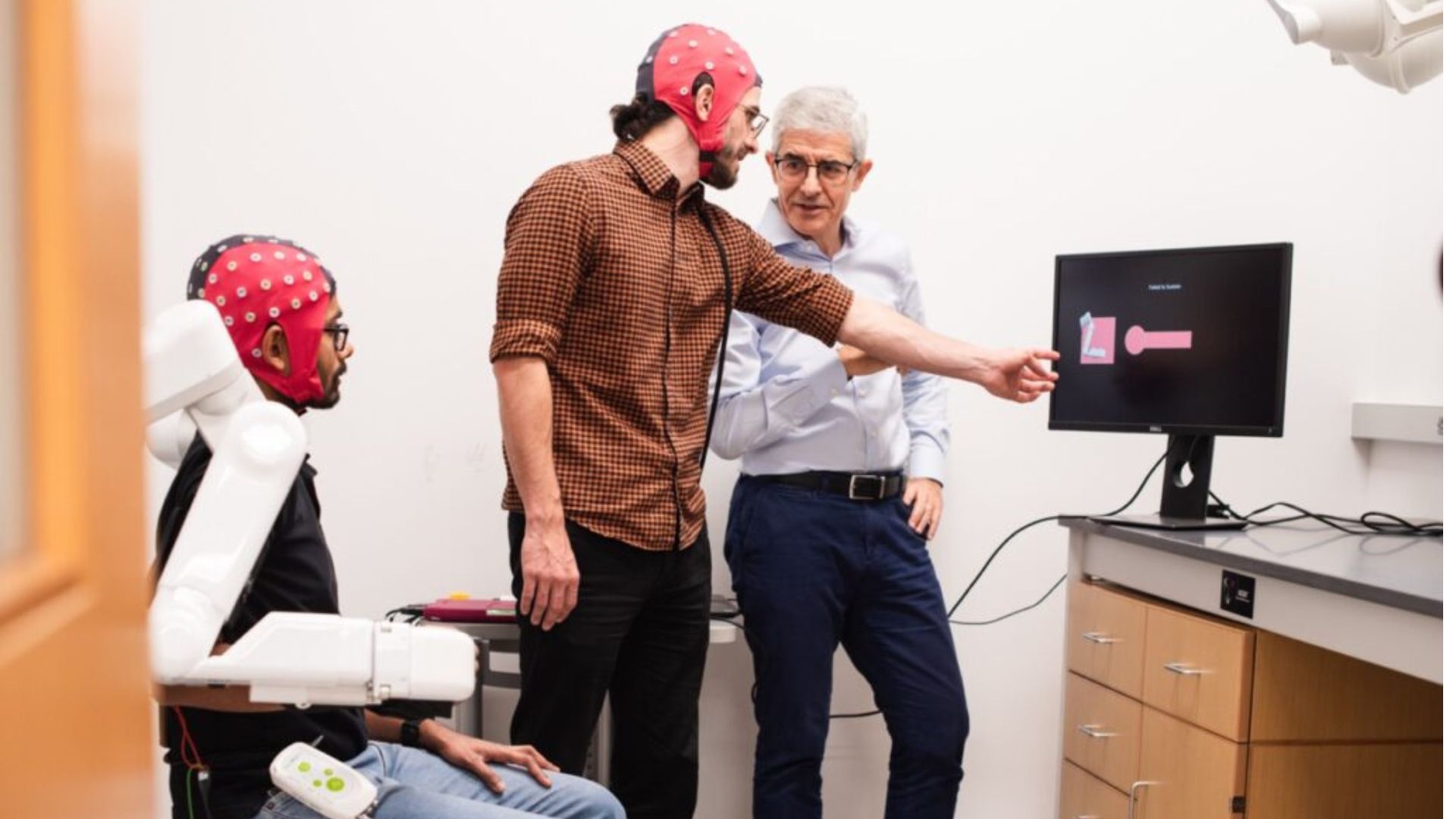
Picture yourself immersed in a racing game, where navigating through intricate turns in a lap solely relies on your brain’s commands.
To enable such a vision, researchers at the University of Texas at Austin have developed a brain-computer interface (BCI) that enables people to play games and much more with just their thoughts.
The team’s primary goal was to enhance the quality of life for individuals with motor disabilities. Crucially, they integrated machine learning functionalities into their brain-computer interface, creating a universally applicable solution.
Researchers developed a “decoder trained on the data of a single expert”, which is “readily transferrable to inexperienced users via domain adaptation techniques, allowing calibration-free BCI training,” said the study.
The research details regarding developing the team’s calibration-free interface were published in PNAS Nexus.
Making the technology more accessible
Since every user’s brain is unique, healthy, and impaired, typical BCI devices usually need lengthy calibration, which has been a major barrier to their widespread acceptance.
The new system used by the researchers implies that several patients could use the gadget without customization.
“When we think about this in a clinical setting, this technology will make it so we won’t need a specialized team to do this calibration process, which is long and tedious. It will be much faster to move from patient to patient,” said Satyam Kumar, a graduate student in the lab of Jose del R. Millan, a professor in the University’s Cockrell School of Engineering and Dell Medical School’s Department of Neurology, in a statement.

The mechanism operates through a cap outfitted with electrodes worn by individuals and linked to a computer. These electrodes gather data by detecting electrical signals from the brain. Subsequently, the decoder interprets and transforms this data into in-game actions.
According to researchers, the brain’s capacity to develop, change, and reorganize itself over time is known as neuronal plasticity, and Millan’s work on BCIs helps users strengthen and guide this capacity. These studies aim to enhance patients’ brain function and simplify their lives using BCI-controlled gadgets.
Two things were done in this instance: one was to play the racing game for cars, and the other was to balance a digital bar on its left and right sides.
For the easier bar assignment, an expert was educated to create a “decoder” that enables the interface to convert brain waves into commands.
The decoder is essential to avoiding the drawn-out calibration procedure and acts as a foundation for other users.
Advancing BCI technologies for further applications
Researchers claim that the decoder performed well enough that subjects trained for both the more difficult car racing game, which required multiple steps to make turns, and the bar game simultaneously.
The researchers referred to this work as foundational because it lays the groundwork for future advancements in brain-computer interface technology.
The eighteen subjects in this experiment were motor-impaired free. As they proceed in this direction, they will eventually test this on individuals with motor impairments to apply it to larger groups in clinical settings.
“On the one hand, we want to translate the BCI to the clinical realm to help people with disabilities; on the other, we need to improve our technology to make it easier to use so that the impact for these people with disabilities is stronger,” said Millan.
In addition to translating the findings, Millan and his colleagues are also developing a brain-computer interface-driven wheelchair. Also, the researchers could demonstrate yet another possible application of the technology: they could operate two hand-and-arm rehabilitation robots.
According to the team, this previewed future directions for this technology, which is not a feature of the just published research. A few volunteers were able to manage the brain-controlled robots in a matter of minutes.
“The point of this technology is to help people, help them in their everyday lives. We’ll continue down this path wherever it takes us in the pursuit of helping people,” said Milan.
Abstract
Subject training is crucial for acquiring brain–computer interface (BCI) control. Typically, this requires collecting user-specific calibration data due to high inter-subject neural variability that limits the usability of generic decoders. However, calibration is cumbersome and may produce inadequate data for building decoders, especially with naive subjects. Here, we show that a decoder trained on the data of a single expert is readily transferrable to inexperienced users via domain adaptation techniques, allowing calibration-free BCI training. We introduce two real-time frameworks: (i) Generic Recentering (GR) through unsupervised adaptation and (ii) Personally Assisted Recentering (PAR) that extends GR by employing supervised recalibration of the decoder parameters. We evaluated our frameworks on 18 healthy naive subjects over five online sessions, who operated a customary synchronous bar task with continuous feedback and a more challenging car racing game with asynchronous control and discrete feedback. We show that along with improved task-oriented BCI performance in both tasks, our frameworks promoted subjects’ ability to acquire individual BCI skills as an expert subject’s initial neurophysiological control features evolved and became subject-specific. Furthermore, those features were task-specific and were learned in parallel as participants practiced the two tasks in every session. Contrary to previous findings implying that supervised methods lead to improved online BCI control, we observed that longitudinal training coupled with unsupervised domain matching (GR) achieved similar performance to supervised recalibration (PAR). Therefore, our presented frameworks facilitate calibration-free BCIs and have immediate implications for broader populations—such as patients with neurological pathologies—who might struggle to provide suitable initial calibration data.












